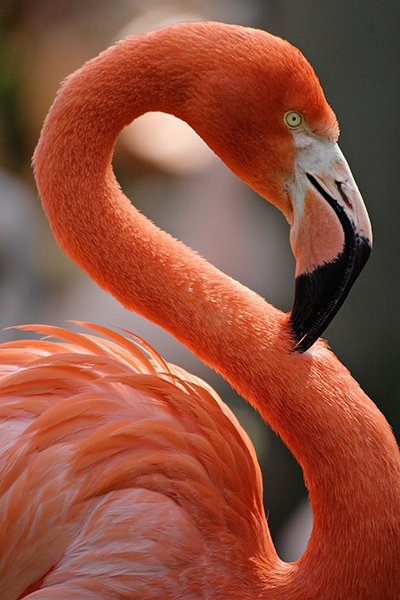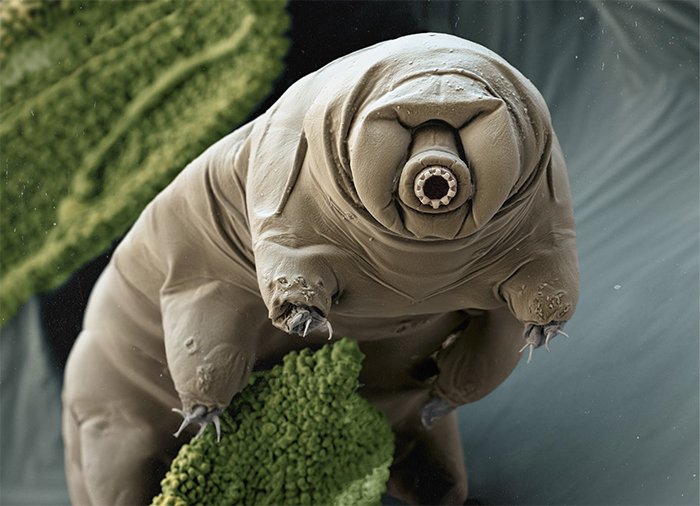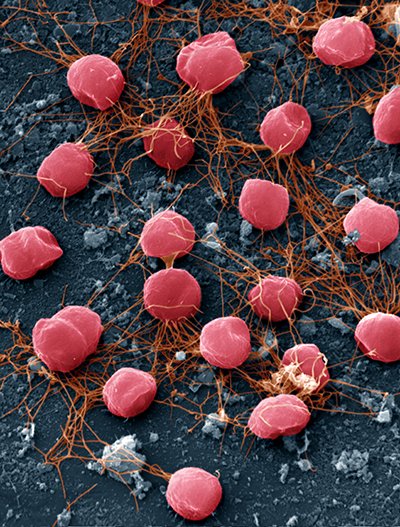
Extremophiles—Staying Alive
These super survivors are an extreme example of how God has equipped his creatures with exactly what they need to live.
Most people like their weather like Goldilocks likes her porridge: not too hot, not too cold, but just right. Unfortunately, life isn’t a fairy tale, and extremes aren’t always easy to avoid.
Yakutsk, Russia, the coldest city on earth, has an average daily temperature of 16°F. Tórshavn, the capital of the Faroe Islands located in the North Atlantic Ocean, receives only 2.4 hours of sunlight per day. Cairo, Egypt, receives less than 1 inch of rain a year.
People living in these and other extreme environments construct weather-resistant shelters, use technology, and access city services to survive these challenging conditions. But one group of organisms takes survival to a whole other level. You’ll find them comfortably living north of the Arctic Circle, in deep-sea volcanic vents, and even around toxic waste sites.
We call them extremophiles.
Thriving in habitats lethal to other animals, extremophiles illustrate the intelligent design of a master Creator to fill every corner of the earth with life.
Not Just a Lawn Ornament

Extremophiles come in all shapes and sizes. The lesser flamingo (Phoeniconaias minor) looks like a comical cartoon character with its stilt-like legs, spaghetti neck, and pink plumage. However, in reality, the flamingo is one tough bird.
For starters, this flamingo feeds in lakes and lagoons with pH levels that are hazardous to most other creatures. Tanzania’s Lake Natron, an alkaline lake that hosts flamingo flocks numbering over two million, contains toxic levels of sodium carbonate. This corrosive chemical is strong enough to strip a person’s skin off. Yet the flamingo has no problem wading through the caustic lake due to the tough skin and scales on its legs.
If you think the lesser flamingo’s living conditions are bad, wait until you hear about its diet. This seemingly invincible avian literally eats poison for breakfast—and every other meal of the day—as it feeds on the blue-green algae (cyanobacteria) that resides in Lake Natron’s noxious waters. Although the toxic chemicals produced by cyanobacteria can cause other animals to die within hours, the flamingo eats these poisonous plankton in huge quantities.
Just as extra garlic on your cheese bread comes with a side effect of smelly breath, the flamingo’s feast of algae comes with a side effect of sewer smell. When the large algae blooms that populate Lake Natron die and decompose, they release a stifling stench only exacerbated by wetland temperatures of over 120°F (48.8°C). But again, the flamingo is unfazed. Its sweltering, stinky, hypersaline home is the perfect place to avoid predators.
Cold Feet
Though most flamingos are tropical birds, the Andean flamingo (Phoenicoparrus andinus) and James’s flamingo (Phoenicoparrus jamesi) live high in the Andes mountains of Peru, Chile, and Bolivia. At altitudes reaching 14,000 feet (4,267.2 m) where oxygen is limited, shallow lakes sometimes freeze at night, trapping the bird’s foot in ice as it sleeps. When the sun rises in the morning, the ice melts, and the flamingo walks away unharmed.
In addition to withstanding cold, the flamingo can endure heat. In volcanic areas, the adaptable avian can drink from hot springs where the water is nearly boiling. And when fresh water is in short supply, specialized glands in the flamingo’s nostrils enable it to drink saltwater. These extremophiles can also fly to altitudes of 15,000 feet (4,572 m), reach speeds of 35 mph (56.3 kmh), and migrate as far as 350 miles (563.2 km) in a single flight.
Flamingos fly high in terms of being super survivors, but a number of other creatures also hold the title of being extremophiles.
More Than You Can Bear
Tardigrades take survival to a whole other extreme. To the unaided human eye, these tiny invertebrates (usually smaller than a grain of sand) are virtually invisible. Under a microscope, however, the tardigrade looks like a gummy bear with eight clawed legs and almost no head.

Photo by EYE OF SCIENCE / SCIENCE SOURCE
Though tardigrades can live on land, they’re more frequently found in water (that’s why they’re often referred to as water bears). When the tardigrade finds itself removed from a moist or liquid environment, it pulls in its legs and head and curls into a cocoon-like ball. As it dehydrates to around 3% of its normal liquid content, it enters the state of cryptobiosis in which all its metabolic processes shut down.
But before any of the tardigrade’s cells can be damaged in this extreme state, proteins called TDPs (tardigrade-specific intrinsically disordered proteins) harden around the molecules in the tardigrade’s cells like individual forcefields of glass (a process called vitrification).
In its dehydrated and vitrified state (known as the tun state), the tardigrade can tolerate temporary heat extremes of -450°F to 300°F (-267.7°C to 148.8°C). It can also endure atmospheric pressure of around 96,000 psi (96 ksi). That’s six times the pressure found in the Mariana Trench—the deepest oceanic trench in the world! And get this: tardigrades can live without food or water in the tun state for 30 years. Scientists have even carried these tiny “teddy bears” into the vacuum of space, and—yep, you guessed it—they survived. Because tardigrades can live in a multitude of environmental extremes, they’re known as poly-extremophiles.
Good Under Pressure
The giant tube worm (Riftia pachyptila) is not your average worm. For starters, this worm can grow up to eight feet long. That’s not something you’d want to find in your flower garden!
Even more remarkable than the tube worm’s size is the fact that it can live comfortably at 5,000 feet (1,524 m) or more below sea level. At this depth, the crushing pressure of over 7,350 psi (7.35 ksi) would instantly kill a human, but the tube worm has the perfect body structure to withstand the intense pressure on the Pacific Ocean floor. Tube worms don’t have usual organs such as a stomach and lungs, so they have nothing to collapse under pressure. However, living without a stomach makes survival challenging. That’s why God assigned microbial reinforcements to make sure the tube worm gets enough to eat.
Tube worms congregate around hydrothermal vents that spew out toxic gases such as carbon dioxide and hydrogen sulfide. Though poisonous, these living conditions couldn’t be cozier for the tube worm. Bacteria within the worm’s slender body convert the toxins into nutrients through a process called chemosynthesis. The more we learn about the tube worm, the more we marvel at God’s ability to cultivate life in every area on earth.
Frozen State, But Not Croaked
In the eastern United States, Canada, and far up into Alaska, you’ll find the wood frog (Lithobates sylvaticus) living in forests, bogs, and thickets. But when the winds of winter blow in, these extremophiles handle the cold in a unique way—they freeze! In fact, during brumation (the hibernation process for cold-blooded animals), as much as 65% of the wood frog may turn to ice.

Wood frogs find cover under leaves, branches, or logs before beginning their freeze-thaw cycle.
As the weather grows colder, the frog’s liver begins producing extra glucose (a natural antifreeze) and starts distributing it throughout the frog’s cells to prevent them from crystallizing. With the frog’s cells protected, the rest of the water in its body can freeze, and its breathing begins to slow. Eventually, its heart completely stops. At that point, the frog hasn’t croaked; it’s merely in a cryogenically frozen state. In Alaska, this deep brumation can last as long as seven months.
When spring finally arrives, the frog’s body thaws, and its blood begins to flow again. Before long, its body begins to function like normal, and it hops away, ready to find a meal after the long, cold winter.
Radiantly Designed

Photo by DENNIS KUNKEL MICROSCOPY / SCIENCE SOURCE
The tardigrade isn’t the only poly-extremophile. The microbe Deinococcus radiodurans, also known as “earth’s toughest bacterium,” can thrive in almost any environment.
Not only can D. radiodurans withstand cold, acid, pressure, and the vacuum of space, but lethal doses of radiation don’t even faze it. It can survive 1,000 times more radiation than almost any other living organism.
To put this into perspective, a human is exposed to about .01 Gy (gray) of radiation when receiving a chest X-ray. If a human were exposed to 5 Gy of ionizing radiation, he would die. But D. radiodurans can easily withstand 5,000 Gy of radiation. Even at 15,000 Gy, this incredible organism has a 37% survival rate.
To accomplish this feat of survival, D. radiodurans can repair its DNA within 12 to 24 hours. Specialized proteins and repair mechanisms within D. radiodurans, along with several spare copies of its genetic code, make this extremophile virtually indestructible.
Taking the Heat

Photo by EYE OF SCIENCE / SCIENCE SOURCE
Some microbes are so small that millions can fit on the head of a pin. Despite their size, microbes perform vital roles in nature.
Certain kinds of archaea (a single-celled organism similar to bacteria) thrive in high heat. They’re called thermophiles. A number of species live in water with a minimum temperature of 122°F (50°C). That’s hot enough to give a human third-degree burns.
Pyrococcus furiosus (meaning “rushing fireball”) thrives at a temperature of 212°F (100°C). How this archaeon—found in deep-sea vents and boiling volcanic mud—survives these harsh conditions is not fully understood. In other kinds of archaeon, such intense heat would instantly destroy cellular proteins responsible for the organism’s survival. P. furiosus, however, contains heat-resistant enzymes perfectly suited to these extreme conditions.
The unique design of this unusual microorganism and the intensity of its environment are truly a match made in heaven. When it comes to surviving scalding surroundings, thermophiles can definitely take the heat.
Seen and Unseen
Extremophiles are more than just really cool creatures. They refute the evolutionary claim that microbial extremophiles were the building blocks from which more-complex organisms evolved. Although these single-celled microbes are considered among the simplest forms of organic life, simple is a relative term. It is true that these organisms may be composed of fewer components than larger organisms; however, they are still equipped with complex enzymes and specific proteins that enable them to function in some ways that humans have attempted for years to imitate. For example, scientists have studied D. radiodurans for clues as to how humans might develop protection against extreme elements.
If human beings evolved from a common ancestor with these purportedly simple creatures, then why are their complexities still beyond our comprehension, much less our ability to imitate? And how could enough time and random chance have produced such complex creatures in the first place?
The only answer is that the same God who created humans with so many complex workings inside their bodies created each kind of organism with the same care and creativity. In Eden, he endowed the original animal and microbial kinds with the features they would need to adapt to all sorts of conditions in a fallen world.
Romans 1:20 and Psalm 104:24–25 remind us that all things—both seen and unseen—were made by God. When we study creation through the lens of Scripture, we see the workings of a master Engineer. Only an all-knowing and all-powerful God could equip each of his billions of created organisms with exactly what it needs to live in each corner of creation. Indeed, creation—even the tiniest organisms—showcases the extreme creativity of our extraordinary God.
Recommended Resources

Answers in Genesis is an apologetics ministry, dedicated to helping Christians defend their faith and proclaim the good news of Jesus Christ.
- Customer Service 800.778.3390
- Available Monday–Friday | 9 AM–5 PM ET
- © 2025 Answers in Genesis



